#artist is onorio marinari
Text
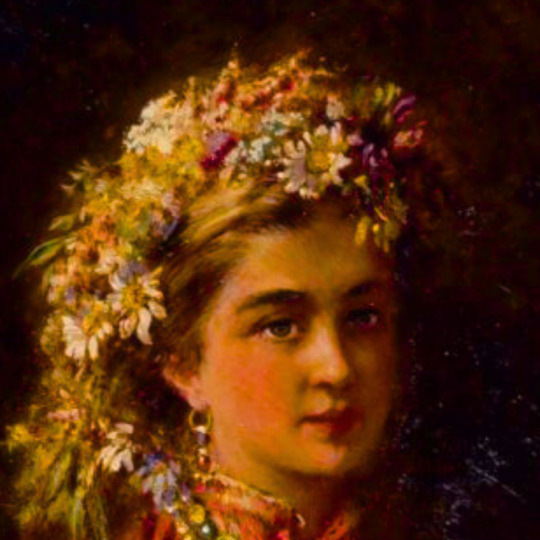



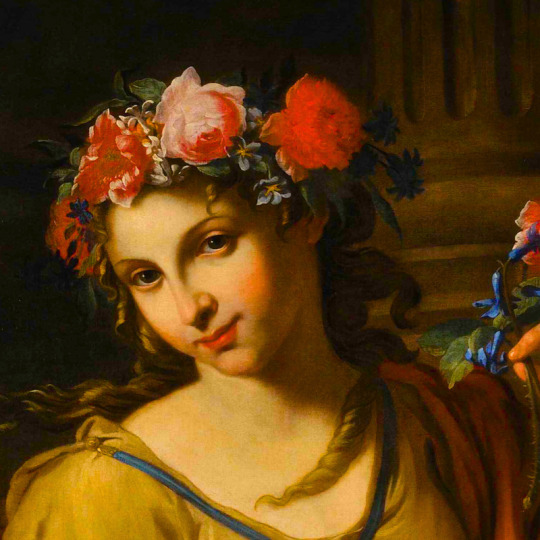
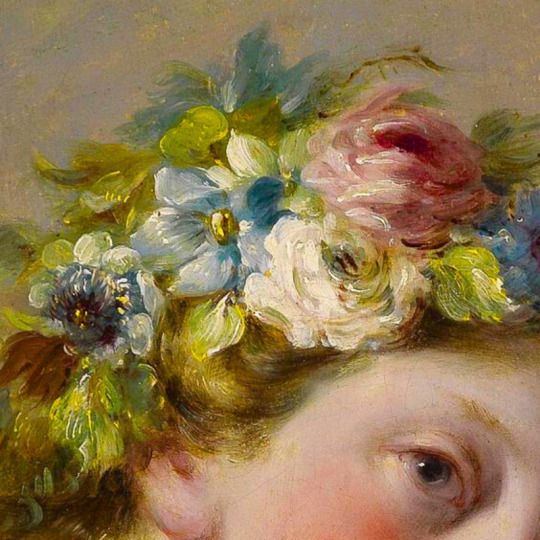
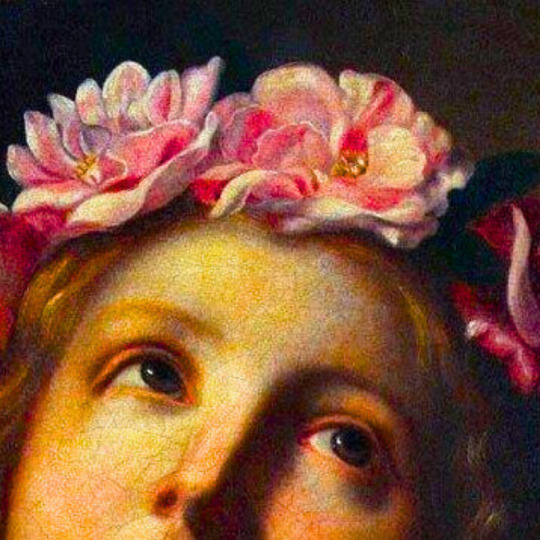
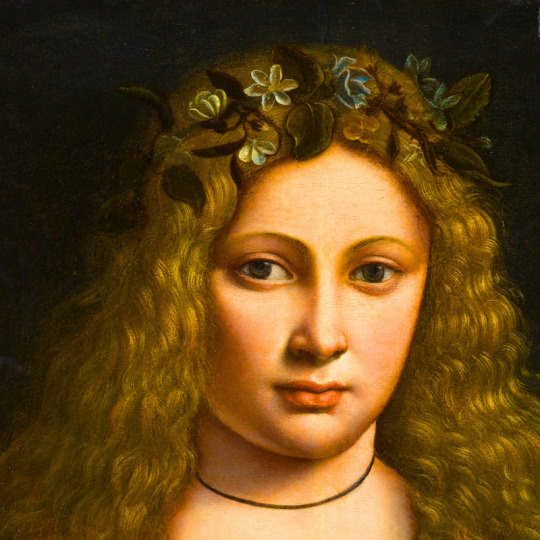
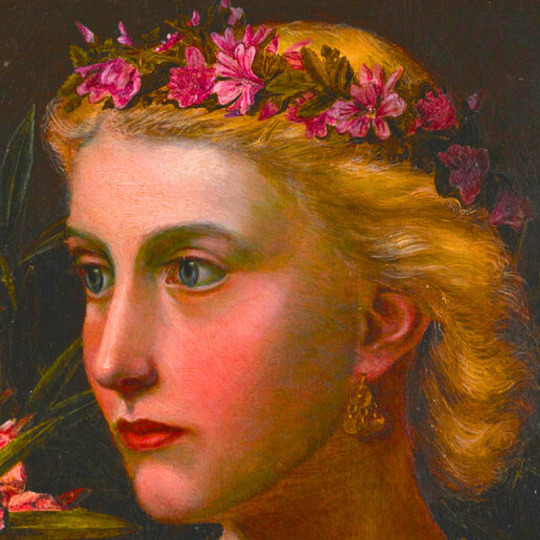

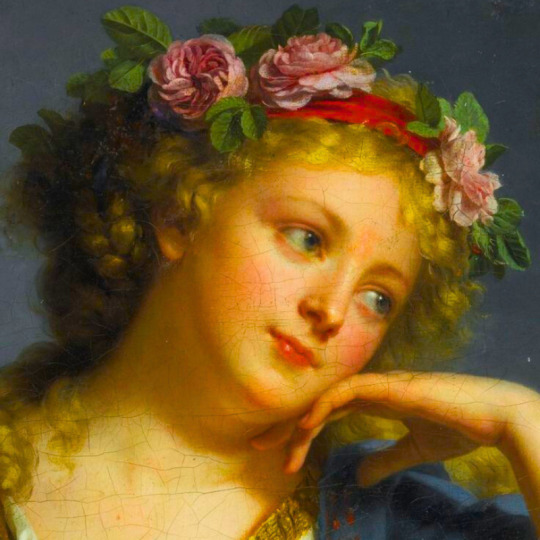

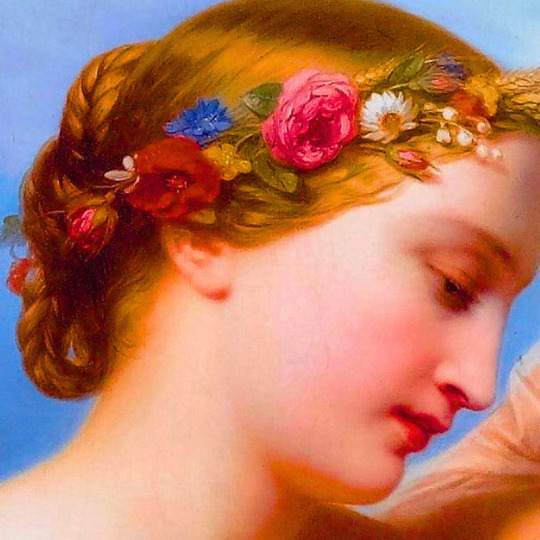
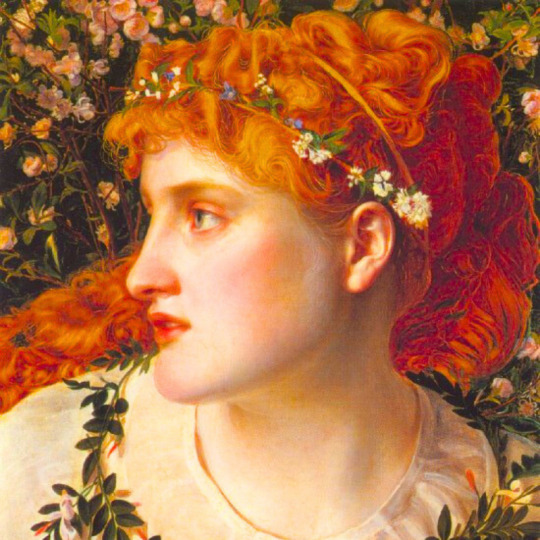

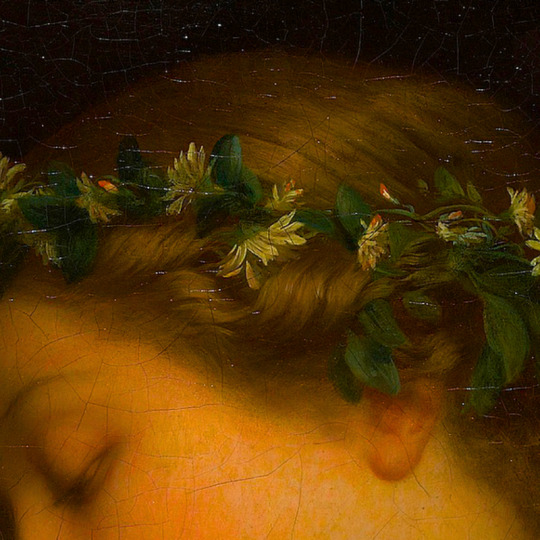


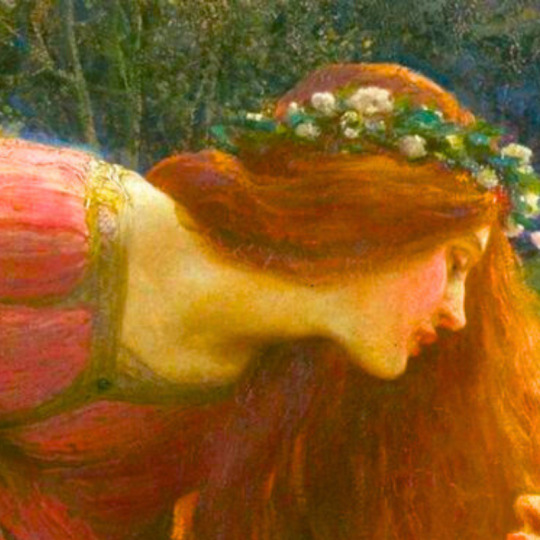

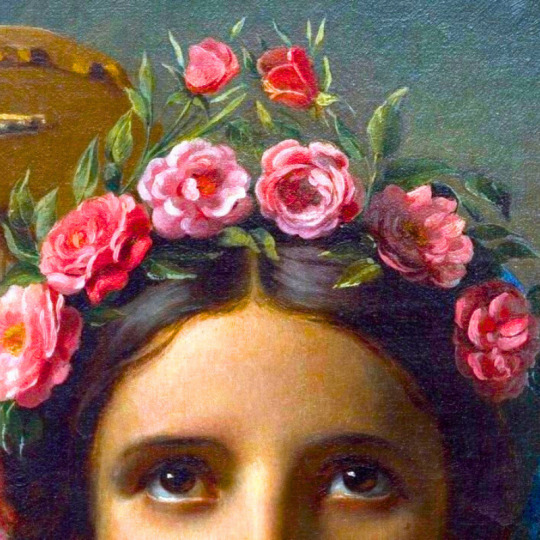
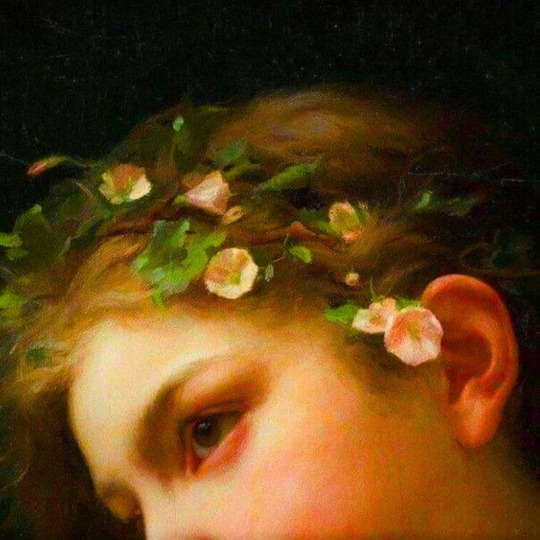
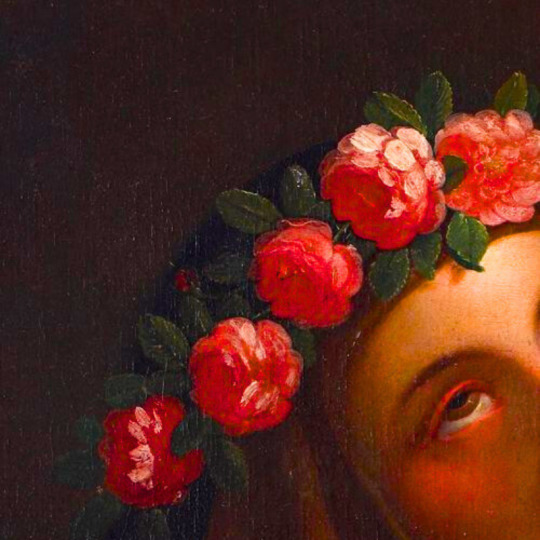




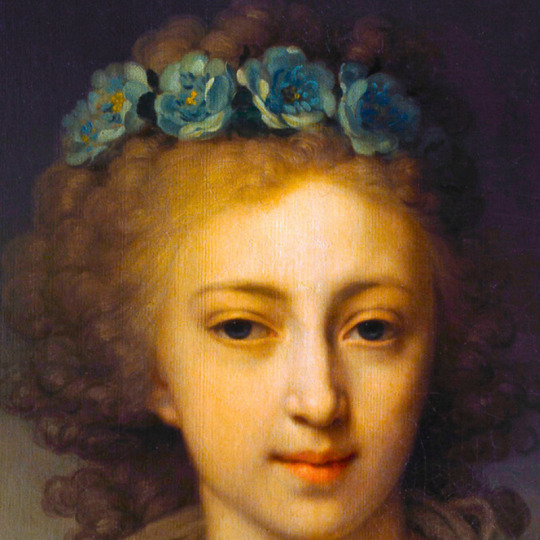
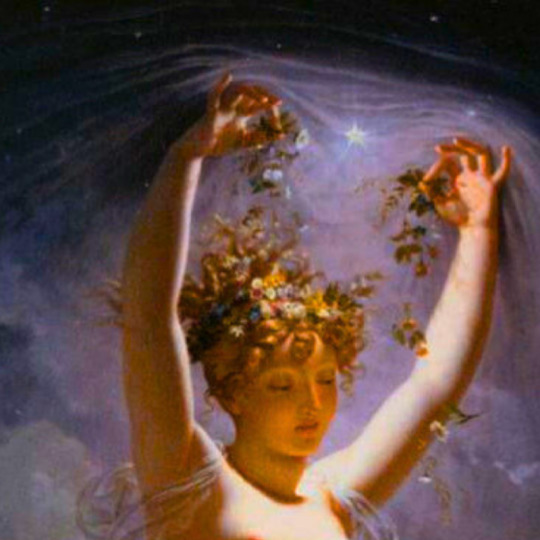

flower crowns + art
#young girl with a flower garland by unknown#flora by rembrandt#ophelia by beatrice offor#flora by pietro dandini#flora by antonio franchi#allegorie des sommers by giuseppe nogari#saint cecilia by onorio marinari#portrait of a youth crowned with flowers by giovanni antonio boltraffio#a saxon princess by emma sandys#i cant find who made this#a portrait of a woman by marie genevieve bouliard#an allegory of intelligence by cesare dandini#cant find the artist#perdita by frederick sandys#fanciulla con lilla by achille beltrame#girl guesses on camomile by charles landelle#the shepherdess by edward fredrick brewtnall#a nymph by blance paymal-amouroux#la belle dame sands merci by john william waterhouse#a girl wearing a garland of wild roses by george lawrence bulleid#saint cecilia of rome by francois-joseph navez#girl with a bouquet of daisies by jules-cyrille cave#saint rose of lima by jose del pozo#poynter by john edward barine#mother and child by eduard veith#pleasure by anton raphael mengs#auguste of baden-baden by alexis simon belle#grand duchess elena pavovna of russia by vladimir borovikovsky#aurora and cephalus by pierre-narcisse guerin#lesbia and her sparrow by sir edward john poynter
502 notes
·
View notes
Text
Art in the Real World
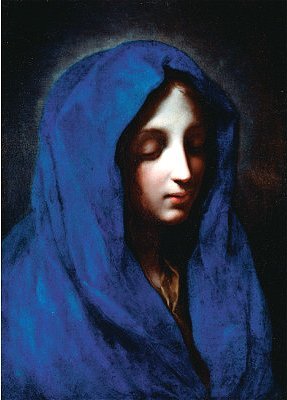
Title: Blue Madonna. ( Original title: "Mater Dolorosa")
Author: Carlo Dolci. ( Attributed by some to his pupil and cousin Onorio Marinari)
Italy, 1670s. Oil on canvas, Dimensions: 21" x 15.25"
Ringling Museum, Sarasota, Florida.
One of the most beloved paintings of the entire Ringling Museum collection, the Blue Madonna is a relatively small painting
(cm 53 X 39) by Italian Carlo Dolci, nicknamed "il Carlino", active in Florence in the second half of the 1600s. Even though the name of Dolci is not widely known, he was one of the leading painters in Tuscany of his time. Of course in his time, and in general during the Baroque period, the pulsating heart center of the art world was no longer Florence, but Rome.
The painting is a simple image of a very young Virgin Mary, in a very lush royal blue robe, and it reminds of El Greco and its use of color to represent spiritual life. Dolci once stated his "firm intention to paint only works that would inspire the fruits of Christian piety in those who saw them." The "Mater Dolorosa" ( "Mother in Pain" the original title of this painting ) is one of the mysteries more renowned in the Catholic teachings: it describes how during the Annunciation, when the very young virgin Mary was visited by the archangel Gabriel, she was told that she would be the mother of the Savior. She was also told of her Son's crucifixion to redeem the sins of the world. Therefore, the young Mary already had in herself the pain of the death of his son, to be suffered thirty-three years later. It is a very beloved image in Catholic iconography: even Michelangelo, in his Pietà, represented it with a very young Mary carrying the body of Her adult Son.
The beauty of this painting is in its simplicity. The light falling from above illuminates the downcast face of Mary which seems to emerge almost supernaturally from the rich fabric of the blue robe. The influence of Caravaggio in the use and the contrast of lights and darkness for dramatic purposes is evident. The gaze of the viewer is therefore magnetically attracted to the sorrowful face. A single, simple subject, in a dark background. Dramatic use of a single color and of lights and shadows. Uniformity at its best.
I love this painting. As a Catholic myself, and having grown up in a household where almost every room had a painting of the Virgin Mary, I connected immediately. Furthermore, being from Rome, I am quite familiar with the sensory spell that baroque art can emanate. This work of art gave me the strange feeling of looking at something never seen before, and yet familiar. The day I visited the museum, it was deserted. I had all the time to observe closely the masterful brushwork of the artist.
Dolci, I discovered, was painstakingly slow in completing his works, and because of the critiques of his contemporaries, he fell into a deep depression. I wonder if the sadness of this painting is also a reflection of the painter's interior struggle.


0 notes
Text

Artists included: Ángel Zárraga, Marten de Vos, Artus Wolfaerts, Jacopo Zanguidi, Jacob de Backer, Gerrit van Honthorst, Francesco Guarino da Solofra, Francesco Guarino, The Master of the Parrot, Antwerp School, Manuel Lopez Vazquez, Anton Kern, Pere Lembrí, Valencian School, Caravaggio, Anton Raphael Mengs, School of Toledo, Spanish School, Pedro Orrente, Francisco Camilo, Bolognese School, Northern follower of Leonardo da Vinci, Ferrarese School, Jacopo Bassano, Marco Palmezzano, Marco Palmezzano, Orazio Lomi Gentileschi, Giovanni Battista Piazzetta, Jacques Stella, Artemisia Gentileschi, Daniele Crespi, Onorio Marinari, Gregorio Lazzarini, Francesco de Mura, Francisco Camilo, Sir Peter Paul Rubens, Theodoor Rombouts, Jacques d'Arthois…
Please follow link for full post
Francesco Guarino da Solofra,Artus Wolfaerts,Jacob de Backer,Gerrit van Honthorst,Jacopo Zanguidi,Marten de Vos,RELIGIOUSART, Zaidan, Mythology, Religion, biography, Paintings, Art, History, Ancient, footnotes,
66 Paintings - RELIGIOUS ART BY THE OLD MASTER PAINTERS - Paintings from the Bible, with footnotes
#Icon#Bible#biography#History#Jesus#mythology#Paintings#religionart#Saints#Zaidan#footnote#fineart#Calvary#Christ
0 notes
Text


For this assignment I chose to analyze the Mater Dolorosa, previously known as The Blue Madonna, 1670s painted by Onorio Marinari (Italian, 1627-1715). My boyfriend, John, has always told me how this work of art captures him every time he visits it. And through the process I took of deeply studying this piece I can see why that is. This painting can be found in the Italian Baroque Art section of The John and Mable Ringling Museum located in Sarasota. This painting is an oil on canvas and measures the image: 21 × 15 1/2 × 3/4 in. (53.3 × 39.4 × 1.9 cm) and frame: 30 1/8 × 24 1/8 × 2 1/4 in. (76.5 × 61.3 × 5.7 cm). Bequest of John Ringling, 1936. The reason I mentioned this to be previously known as The Blue Madonna is because this piece was once attributed to the great Carlo Dolci. Upon further research by the Ringling Museum, it was learned that this was painted by one of Dolci’s greatest followers and cousin, Onorio Marinari. Dolci and Marinari had a remarkably comparable way of producing art that portrayed a great balance between melancholy and sweetness to their pieces. In the Mater Dolorosa, we see a beautiful portrait of Mary wrapped in a royal blue robe. An emphasized color that would capture the eye of anyone strolling through this exhibit. Which would easily allow for this painting to be one of the most visited works of art in the museum. Blue became associated with the Virgin Mary in the early 5th century and the color signifies her role as the new ark while representing peace, tranquility, and the divine. In this painting we can appreciate how Mary is illuminating from the inside out. Her face was captured in such a soft way that she almost resembles a porcelain doll. I could physically feel the spiritual glow of her aurora just by looking at her. Marinari did a stunning job of using the effect of chiaroscuro in this piece through dark shadows of the background and luminescent light shining down on Mary’s face. The slight touch of highlight added on top of her head makes it look like a halo is being cast over her. How incredible that there is only one subject matter to this piece, yet there is such a wide range of emotions to feel in the simplicity. This artwork tells me that the artist, Marinari, is a religious man who wanted us to view Mary in a soft and innocent lighting. He might have even wanted us to feel sympathy for Mary and the melancholy she felt. I say that because the Mater Dolorosa means “the Virgin Mary sorrowing for the death of Jesus Christ.” Based on everything that I have learned from the artwork and the artist, this is an important piece to society and to the world. This is because the world needs spiritual enlightenment and awakening. We need pieces like this to help us feel emotions that are greater beyond our own understanding. That is where the truest form of peace and purpose can be found. And I believe it to be a hope from Marinari, that we would not only view his artworks as a skill but that we may look through it to understand the emotions he was trying to convey to us.
0 notes
Text
Virtual Sketchbook 3
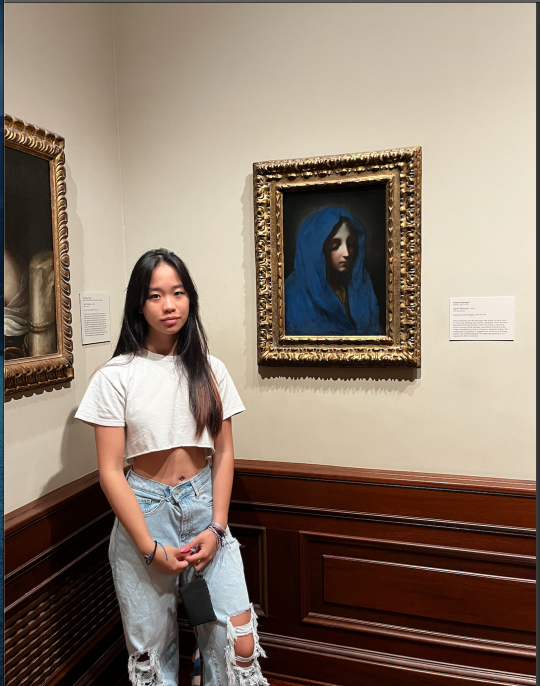

Mater Dolorosa was created in the 1670s by Italian Onorio Marinari using oil on canvas. The piece is 21 x 15 1⁄2 x 3⁄4 inches. It features a depiction of the Virgin Mary on a dark black background, wrapped in a stunningly vivid dark blue veil, with her pale face and rosy cheeks halfway obscured by a shadow. Her eyes are closed, and her face is peaceful. It is an extremely intimate, melancholy portrait of Mary. The entirety of the background is dark, and so her veil stands out greatly. The bold blue highlights the powerful presence of the subject. Her pale face accented by rosy cheeks and lips does as well. Those colors contrast greatly with the background. I think the best word to describe this piece is dramatic.
This work evokes a feeling of calm. It sets the viewer in a pensive, thoughtful mood, evoking the urge to reflect and confess. The intimacy of the portrait is what ultimately spurs these feelings, Mary’s closed eyes and peaceful expression does remind the viewer of their own mother, a safe person.
This piece was originally attributed to Carlo Dolci, an artist of the Baroque period. However, recent scholarship has instead suggested that this may be the work of his most famous pupil, Onorio Marinari. The true identity of the artist is still up for debate; however, I believe the intentions are quite clear. As Dolci has stated that he has a, “firm intention to paint only works that would inspire the fruits of Christian piety in those who saw them." I believe Marinari would hold a similar opinion. When saints are painted in this composition, the intended purpose of the work is usually to be used for private devotion and prayer in the home. The otherworldliness, yet homeliness, of the painting would make sense in that regard. It has an intimacy that inspires devotion.
Of all of the works that I viewed at the Ringling Museum, this one is the one that stood out the most to me. As beautiful and detailed as so many of the works were, they almost seemed to blend together after looking at so many. They are unique of course, and absolutely beautiful, but non caught my eye the way Mater Dolorosa did. It was hung in a smaller room, with a few other paintings of a similar style and composition. Yet, none evoked the feeling this did. I am not deeply religious, but this painting drew my eye. It is beautiful in its simplicity, the lush blue unforgettable in the mind’s eye. The color contrast achieves great emotional engagement. I think this painting chose me more than I chose it.
0 notes
Text
Virtual Sketchbook 3
The art I selected is the Mater Dolorosa/Blue Maddona by Onorio Marinari. It is oil on canvas and 21 × 15 1/2 × 3/4 inches. It is a very dark and melancholy artwork this is why I was drawn to it. Next to other paintings that are full of movement, battles, and bright colors the Mater Dolorosa stuck out like a sore thumb. Compared to other portraits the Mater Dolorosa sticks out. Most likenesses are bold and make the person they are painted of stick out and look like royalty this is the opposite of the Mater Dolorosa. The woman in the Mater Dolorosa looks like she is trying to hide or not be painted. It is composed of dark colors such as dark blue, black, and grey. The use of such dreary and dark colors contrasts the pale skin and light hair. The most used shapes in it are curved lines to portray fabric lightly draped on the upper half of the woman's body and to make the soft features of her head and face. The artwork made me feel downcast and sorrowful. Even though I was in a well-lit room with many other people I felt alone and like I was also permanently trapped in the dark. It makes me feel this way because of how depressed and void of hope she looks as well as the dark and gloomy colors used. This painting was painted in the Baroque period and that is noticeable by the heavy shading in the painting as well as the emotion in it. It is a portrait of the virgin Mary and for a long time the work was attributed to Carlo Dolci but it was later found out to have been painted by Onorio Marinari. I feel like the world needed this art because there are many virgin Mary paintings and portraits but they all are bright, hopeful, and similar to each other the Mater Dolorosa changed this. Although I chose this painting because of how dark and grim it is there is no doubt a lot of skill, patience, and talent went into it.

Title: Mater Dolorosa/Blue Maddona
Date: 1670s
Artist: Onorio Marinari
Media: Oil on canvas

Wristband for proof.
0 notes
Text
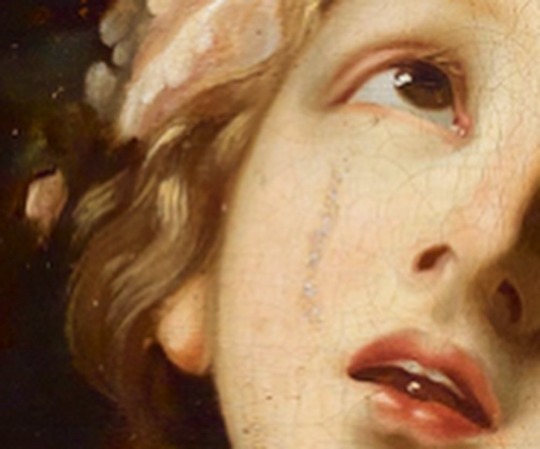
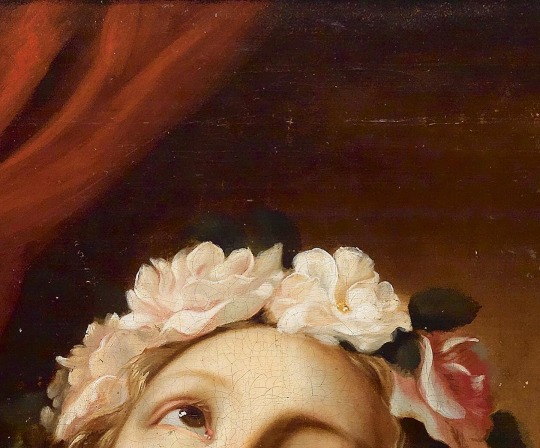
saint cecilia, oil painting on canvas by italian artist onorio marinari, 1627–1715 ✨
#onorio marinari#art detail#dark academia#art history#light academia#classical#painting#art#italian#artist#oil#oil on canvas#women in art#17th century#1600s#1700s#vintage#theme#aesthetic#beige
2K notes
·
View notes
Photo
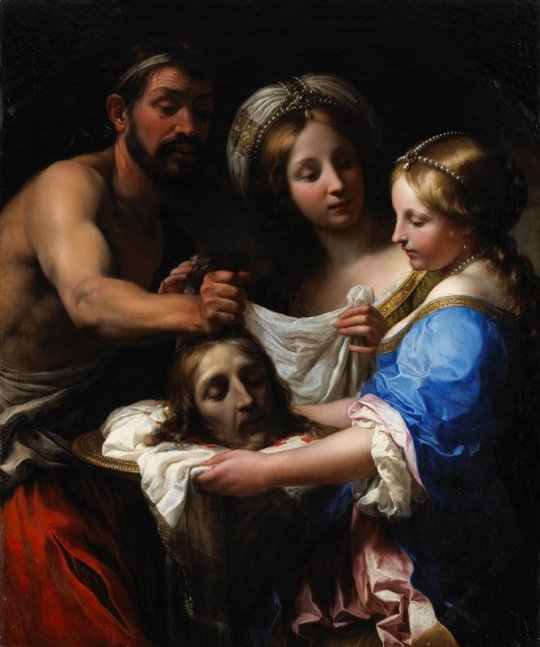
Salome with the Head of Saint John the Baptist, Onorio Marinari, 1670s, Minneapolis Institute of Art: Paintings
rectangular frame with an octagonal opening; three standing figures, a male at left facing right holding the head of St. John's by the hair, a woman wearing a blue dress at right holding a silver tray with the head of St. John on it and Salome at center looking on wearing a white headdress with strands of pearls Grasping a gold plate holding John the Baptist’s severed head, young Salome presents this gruesome prize to her mother. Salome’s stepfather, King Herod, had granted her a wish after she danced for him at a banquet. Prompted by her mother, she asked for John’s head. John had accused Salome’s mother of adultery because she was previously married to Herod’s brother. Into this grisly scene the artist injected a dissonant elegance. Contrasting with the saint’s bloodied head and the shirtless executioner’s rough looks, mother and daughter are beautiful and refined, with porcelain skin and sumptuous attire that includes shiny pearls and elaborate headpieces. By Salome’s downturned head, Marinari suggested a pained remorse as she contemplates the result of her murderous request.
Size: 56 × 50 × 3 in. (142.24 × 127 × 7.62 cm) (outer frame)
Medium: Oil on canvas
https://collections.artsmia.org/art/7020/
14 notes
·
View notes
Text

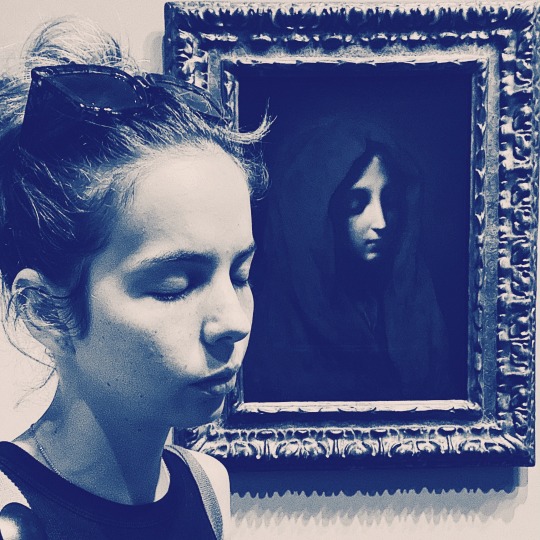

Onorio Marinari
Mater Dolorosa, 1670′s
Oil on canvas
Initially, I was going to write about a different painting. I was going to write about a gothic netherlandish painting “Lady with a Standard”, which I did find at the Ringling Museum and found very beautiful, epic and balanced. On my way out I saw this oil painting, “Mater Dolorosa” by Onorio Marinari. I was immediately taken by the abrupt chiaroscuro, the stark contrast between the deep ultramarine blue of her cloak and the salmon tones of the Virgin’s rosy, young flesh, the utter solemn resignation of her countenance and the striking emphasis on gentle proportion so characteristic of the Florentine Renaissance.
I thought she was at peace after her copious suffering, in the spotlight of a focused portrait, front and center. Her gaze, lowered at three quarters of a turn towards the right, the East, the Sun.
At home, I started writing about her when my stepdaughter came in, wanting to help with my work as always, not knowing that this time she would succeed in doing so and that she was the very reason why the painting stopped me in my tracks a couple days earlier. I asked her to help me by telling me what she saw in the painting. She said: “The color blue, skin color and a little of her brown hair. Her lips are red and pink. She is thinking about angels because angels are nice and she is smiling.” This shocked me. Not having being raised catholic I thought it was surprising that subconsciously she could recognize her face and connect her to the world of angels; I was curious. We kept going. After some prompting, she started talking about what she may be feeling. We wore blue fabrics over our heads and looked in the mirror. We looked at each other. She said “Now I think maybe she is not happy. I don’t know. With the blue clothes she is hiding from the world, actually I think she is sad. Her eyes are closed so I know she is thinking about something important.” Finally, after much debate, she determined that the painting was decidedly “a medium size”.
She grew tired of talking after a while and decided that now she was going to help me by copying what I wrote, word by word and drawing her own interpretation of the painting.

Born in Florence in 1627 little is known of Onorio Marinari other than during his life he commissioned works for Florentine and Tuscan clients and had involvement with the Medici family as patrons and sponsors. His father Gismondo Marinari, was a relatively unknown artist of the time and his first teacher. He is considered a Baroque painter, yet is work is broadly undefined because his talent for imitation has made it difficult for art historians to identify his pieces. Francesco Saverio Baldinucci wrote about Marinari that he was "a very able imitator, above all of the delicate manner of Carlo Dolci", his accomplished cousin whom he trained under. His religious devotion is a trademark of his work and painting subjects as it was for many Renaissance and Baroque men. The classical treatment of the porcelain flesh is reminiscent of the classical Greek inspiration that gives the name to the entire movement, the rebirth of lyrical classicism.
2 notes
·
View notes
Text
Virtual Sketchbook 3
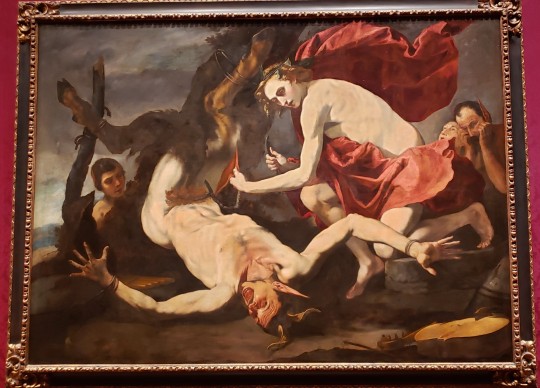
The Flaying of Marsyas by Antonio de Bellis is painted in oil on canvas and is 69 3/8 x 94 3/8 in. (without the frame). The painting depicts the god Apollo flaying the satyr (a mythical creature that has the bottom half of a goat and the top half of a human; apart from goat’s ears and horns) Marsyas. It is a story pulled from Ovid’s Metamorphosis in which Marsyas challenges Apollo (the god of music) to a musical contest. Obviously, Marsyas loses the competition and is flayed alive. Apollo is painted in the same fashion as Greeks gods you see in many artworks; the ideal of a perfect man. He is wearing a vividly red sash, that clashes strongly with the subtle tones of the rest of the painting. Marsyas is depicted very accurately as someone that is being flayed alive. The anguish and fear on his face are very clear at first glance. De Bellis has used directional force to move your eyes around the painting. The first stop is Apollo with his brilliant red sash, then down his arms to Marsyas. From behind Marsyas propped up and bound legs, you can see another young satyr looking on the scene with pity. Following Marsyas’ arms and Apollo’s sash, you will see behind the scene, an older satyr watching with apparent horror and a woman clearly looking away in anguish.
The first thing I feel when looking at this painting is pity. De Bellis has portrayed Marsyas fear and pain so clearly that even with knowing the backstory, it’s hard not to feel that he’s a creature to be pitied. As my eyes move around the painting to see the other satyrs I start to feel sad. This could very well be Marsyas’ family watching on in horror as he is brutally slain.
This painting was created in Naples, Italy between 1637 and 1640 during the Baroque period. Antonio de Bellis (and several other famous artist of that time) was heavily influenced by Caravaggio, one of the largest contributors of Baroque artwork throughout Italy. The artwork of the Baroque period often depicts scenes of excess and opulence, highlighted by intense emotions. Baroque artists also worked with light and darkness in their paintings, showing accurately how it would fall on or around the figures in a scene. Also during this time, the Catholic church commissioned a lot of artists to create works with religious themes as an attempt at a “counter reformation” after a period of Protestant reformation. That is why so many paintings and sculptures from this time period have such strong religious significance. The Flaying of Marsyas, however, is a recreation of another famous depiction of this same story by Jusepe de Ribera called Apollo and Marsyas painted in 1637. There are several similarities between the two paintings, from Apollo’s stance over Marsyas to the satyrs pictured in the background with horrified expressions (I’ve included a picture of de Ribera’s painting below for comparison).
I was immediately drawn to this painting on entering the gallery. I found the intensity of the emotions displayed and the perfect details of each figure. I think that these attributes make this work of art a beautiful example of the Baroque period. De Bellis not only is able to express perfect and accurate emotions in this painting but also his use of light is excellent. It appears that light is falling on both Apollo and Marsyas, and the scene behind is somewhat in the shadows but still able to be seen clearly. In my opinion, this painting would just about look like a picture with how well the details have been painted with the exception of Apollo, who looks very much like a Greek god.
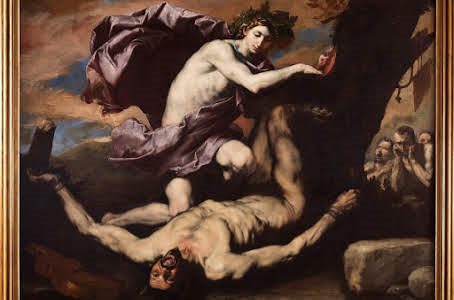

*On a side note, I would have loved to have done this project on Mater Dolorosa by Onorio Marinari but as you predicted the research turned up very little unfortunately. This is my favorite painting at the Ringling and I enjoy it every time I go. The reason I do not have a photo of me with The Flaying of Marsyas is because I went to the museum alone and it was very busy, this one was hard enough to get!
0 notes
Text
Sketchbook 3

Mater Dolorosa (The Blue Madonna) by Onorio Marinari
21 x 15 ½ x ¾ in. (53.3 x 39.4 x 1.9 cm)
Oil on Canvas
I went to the Ringling Museum convinced of which piece I wanted to write about. While I was researching paintings for this assignment, I fell in love with this painter named Artemisia Gentileschi. I had found her pieces online and was engrossed with the fact that she was a female painter all those years ago, which was unheard of! To my dismay, the pieces of hers were still not credited to her at the museum. I walked around slightly bummed about the lack of female representation until I stumbled across Mater Dolorosa (The Blue Madonna) by an Italian Baroque painter, Onorio Marinari. This piece had a different feminine representation than other women were painted in the Baroque period. The painting is the Virgin Mary, a close up on her face--not the normal waist to head with some background composition. Now, if you haven’t yet figure out, I am also partial to the color blue. This piece drew me in immediately. It’s an image of the Virgin Mary wearing her staple blue robe draped over her head. The blue is the essential Baroque shade that comes to mind when thinking of the period. They were experimenting and reinventing the color during the time. However here it is used differently. The blues aren’t just there to be bright in the background or on clothing; they are there to be the subject. The lights and darks of the blue tone make it look like the robe is backlit and glowing. The light gives it a very radial composition and pulls you into the softness of Mary’s face. The blue makes you calm and at peace. The fact that the blue blends into the background, which is simple and black, really makes you pay attention to the expression and the feeling on Mary’s face. She is soft, porcelain white. She is looking down and even though you don’t make eye contact with her, you feel close to her. Perhaps it is due to the close composition, but you feel comfortable with Mary, like she is an old friend talking to you and inviting you in. The only other color shown in this work is a slight peek-a-boo of yellow on her underneath clothing. The artist chose simple primary colors (blue robe, yellow clothes, reddish tint to the skin). The simplicity of the color pallet, the composition, and the subject is something so rare to see in this period. Instead of giving an overwhelming sense of looking into a window and seeing a whole scene as many of the paintings during the Renaissance/Baroque period do, this painting gives you a sense of something personal. The painting draws you into learning about Mary. You can feel radiating power and calmness yet strength about her.
Sometimes with art less is definitely more. I think that Onorio Marinari knew that. He wasn’t a very popular painter at his time. It is almost hard to find anything that he created besides this painting. He was the “one hit wonder” of the Baroque period. He mostly only helped out with bigger paintings and some people even doubt that he did this painting on his own because of how much he didn’t do. I believe that he could relate more to the complex simplicity that things can hold rather than an overwhelming, gold plated masterpiece. Any other portrayal of the Mother Mary during this time doesn’t give me the same feeling. This piece I chose because of how different it is and how real it is. It expresses feelings and emotions and the person painting it also had to feel those emotions. Art isn’t art if it doesn’t make people feel something. This piece is special because it was something completely different for this period. It shows the Virgin Mary in a different light. Not gilded with gold and like royalty or as the mother of Jesus. It shows her as a woman, a person--a soft, genuine person.
https://www.salon.com/2017/04/09/the-mystery-and-true-history-of-a-one-hit-wonder/
http://emuseum.ringling.org/emuseum/objects/20112/mater-dolorosa?ctx=ce4bad46-8c50-4ae6-a31e-0213b4347845&idx=1
https://en.wikipedia.org/wiki/Onorio_Marinari
https://www.huffingtonpost.com/entry/prussian-blue-color-art_us_563bbd85e4b0307f2cac9ccd
0 notes
Photo

Salome with the Head of Saint John the Baptist, Onorio Marinari, 1670s, Minneapolis Institute of Art: Paintings
rectangular frame with an octagonal opening; three standing figures, a male at left facing right holding the head of St. John's by the hair, a woman wearing a blue dress at right holding a silver tray with the head of St. John on it and Salome at center looking on wearing a white headdress with strands of pearls Grasping a gold plate holding John the Baptist’s severed head, young Salome presents this gruesome prize to her mother. Salome’s stepfather, King Herod, had granted her a wish after she danced for him at a banquet. Prompted by her mother, she asked for John’s head. John had accused Salome’s mother of adultery because she was previously married to Herod’s brother. Into this grisly scene the artist injected a dissonant elegance. Contrasting with the saint’s bloodied head and the shirtless executioner’s rough looks, mother and daughter are beautiful and refined, with porcelain skin and sumptuous attire that includes shiny pearls and elaborate headpieces. By Salome’s downturned head, Marinari suggested a pained remorse as she contemplates the result of her murderous request.
Size: 56 × 50 × 3 in. (142.24 × 127 × 7.62 cm) (outer frame)
Medium: Oil on canvas
https://collections.artsmia.org/art/7020/
43 notes
·
View notes
Photo

Salome with the Head of Saint John the Baptist, Onorio Marinari, 1670s, Minneapolis Institute of Art: Paintings
rectangular frame with an octagonal opening; three standing figures, a male at left facing right holding the head of St. John's by the hair, a woman wearing a blue dress at right holding a silver tray with the head of St. John on it and Salome at center looking on wearing a white headdress with strands of pearls Grasping a gold plate holding John the Baptist’s severed head, young Salome presents this gruesome prize to her mother. Salome’s stepfather, King Herod, had granted her a wish after she danced for him at a banquet. Prompted by her mother, she asked for John’s head. John had accused Salome’s mother of adultery because she was previously married to Herod’s brother. Into this grisly scene the artist injected a dissonant elegance. Contrasting with the saint’s bloodied head and the shirtless executioner’s rough looks, mother and daughter are beautiful and refined, with porcelain skin and sumptuous attire that includes shiny pearls and elaborate headpieces. By Salome’s downturned head, Marinari suggested a pained remorse as she contemplates the result of her murderous request.
Size: 56 × 50 × 3 in. (142.24 × 127 × 7.62 cm) (outer frame)
Medium: Oil on canvas
https://collections.artsmia.org/art/7020/
6 notes
·
View notes
Photo
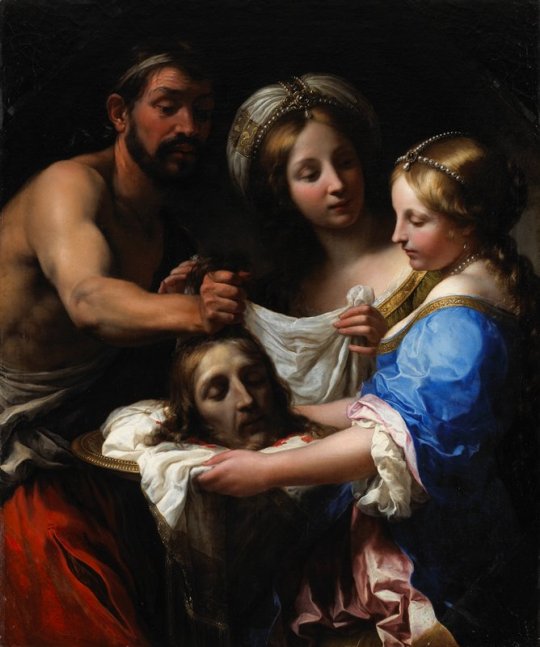
Salome with the Head of Saint John the Baptist, Onorio Marinari, 1670s, Minneapolis Institute of Art: Paintings
rectangular frame with an octagonal opening; three standing figures, a male at left facing right holding the head of St. John's by the hair, a woman wearing a blue dress at right holding a silver tray with the head of St. John on it and Salome at center looking on wearing a white headdress with strands of pearls Grasping a gold plate holding John the Baptist’s severed head, young Salome presents this gruesome prize to her mother. Salome’s stepfather, King Herod, had granted her a wish after she danced for him at a banquet. Prompted by her mother, she asked for John’s head. John had accused Salome’s mother of adultery because she was previously married to Herod’s brother. Into this grisly scene the artist injected a dissonant elegance. Contrasting with the saint’s bloodied head and the shirtless executioner’s rough looks, mother and daughter are beautiful and refined, with porcelain skin and sumptuous attire that includes shiny pearls and elaborate headpieces. By Salome’s downturned head, Marinari suggested a pained remorse as she contemplates the result of her murderous request.
Size: 56 × 50 × 3 in. (142.24 × 127 × 7.62 cm) (outer frame)
Medium: Oil on canvas
https://collections.artsmia.org/art/7020/
7 notes
·
View notes
Photo

Salome with the Head of Saint John the Baptist, Onorio Marinari, 1670s, Minneapolis Institute of Art: Paintings
rectangular frame with an octagonal opening; three standing figures, a male at left facing right holding the head of St. John's by the hair, a woman wearing a blue dress at right holding a silver tray with the head of St. John on it and Salome at center looking on wearing a white headdress with strands of pearls Grasping a gold plate holding John the Baptist’s severed head, young Salome presents this gruesome prize to her mother. Salome’s stepfather, King Herod, had granted her a wish after she danced for him at a banquet. Prompted by her mother, she asked for John’s head. John had accused Salome’s mother of adultery because she was previously married to Herod’s brother. Into this grisly scene the artist injected a dissonant elegance. Contrasting with the saint’s bloodied head and the shirtless executioner’s rough looks, mother and daughter are beautiful and refined, with porcelain skin and sumptuous attire that includes shiny pearls and elaborate headpieces. By Salome’s downturned head, Marinari suggested a pained remorse as she contemplates the result of her murderous request.
Size: 56 × 50 × 3 in. (142.24 × 127 × 7.62 cm) (outer frame)
Medium: Oil on canvas
https://collections.artsmia.org/art/7020/
3 notes
·
View notes
Photo

Salome with the Head of Saint John the Baptist, Onorio Marinari, 1670s, Minneapolis Institute of Art: Paintings
rectangular frame with an octagonal opening; three standing figures, a male at left facing right holding the head of St. John's by the hair, a woman wearing a blue dress at right holding a silver tray with the head of St. John on it and Salome at center looking on wearing a white headdress with strands of pearls Grasping a gold plate holding John the Baptist’s severed head, young Salome presents this gruesome prize to her mother. Salome’s stepfather, King Herod, had granted her a wish after she danced for him at a banquet. Prompted by her mother, she asked for John’s head. John had accused Salome’s mother of adultery because she was previously married to Herod’s brother. Into this grisly scene the artist injected a dissonant elegance. Contrasting with the saint’s bloodied head and the shirtless executioner’s rough looks, mother and daughter are beautiful and refined, with porcelain skin and sumptuous attire that includes shiny pearls and elaborate headpieces. By Salome’s downturned head, Marinari suggested a pained remorse as she contemplates the result of her murderous request.
Size: 56 × 50 × 3 in. (142.24 × 127 × 7.62 cm) (outer frame)
Medium: Oil on canvas
https://collections.artsmia.org/art/7020/
1 note
·
View note